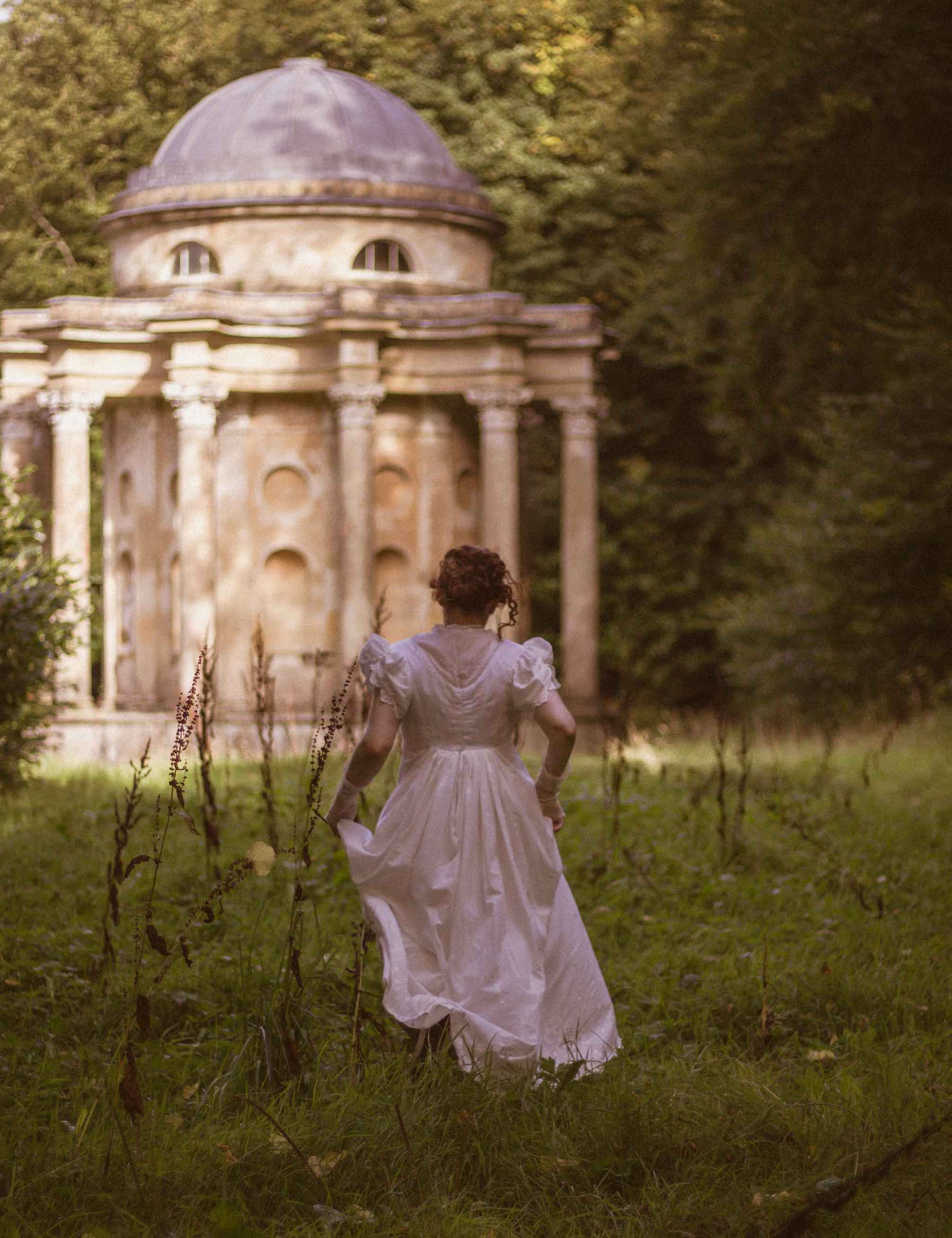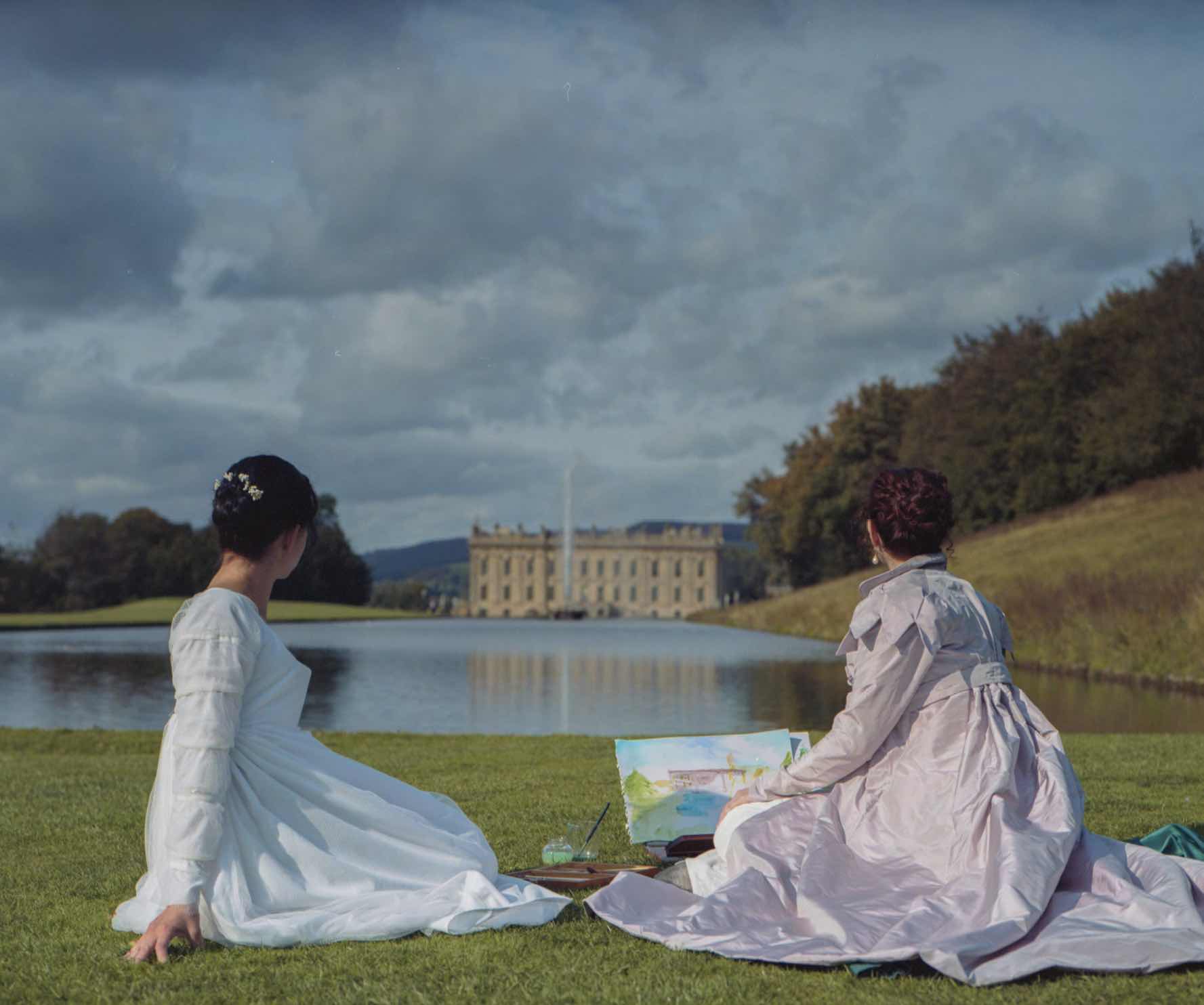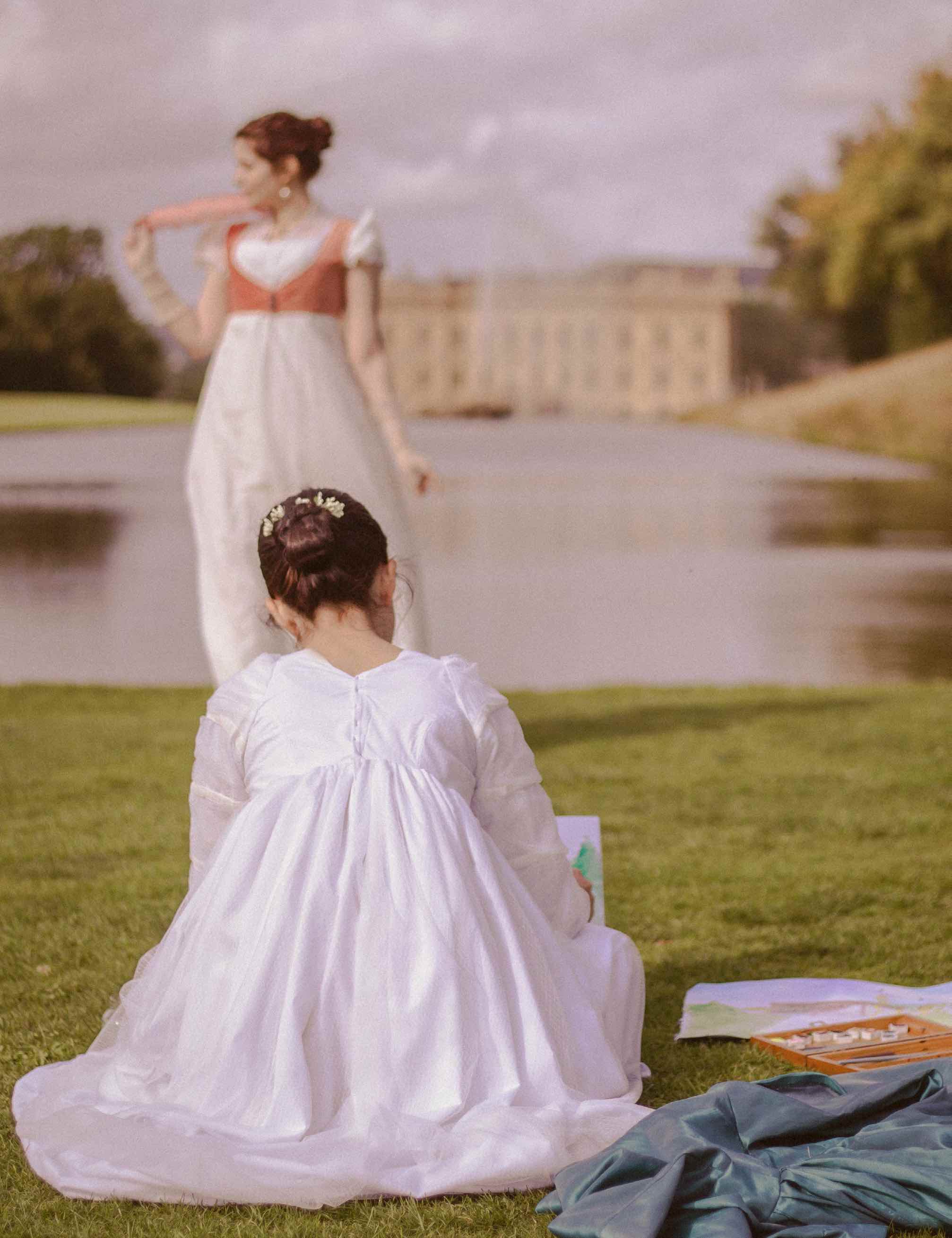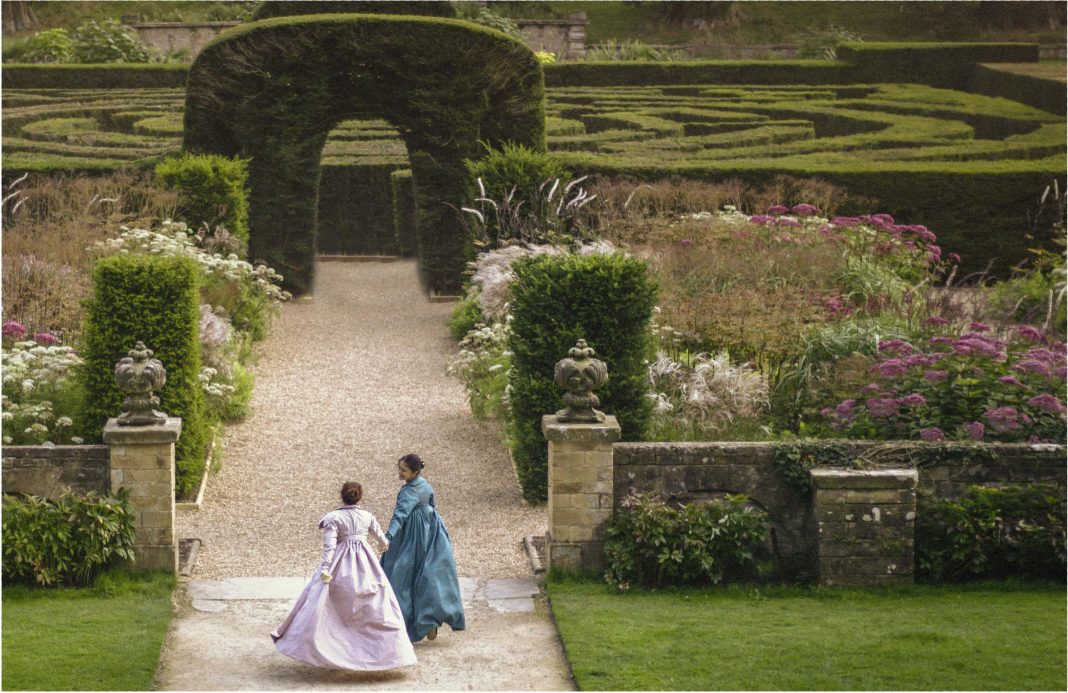Text and Photography by
THE SEAMSTRESS OF ROHAN
If you try to imagine what life was like for a woman in the early 19th century, Jane Austen’s world of complex yet delightful social relationships may come to mind. But in her work there are only hints of the major artistic movement that was at its peak in that moment in Britain. Romanticism had entered the world by the late 18th century and had been influenced by the individualistic ideals of the French Revolution; its followers regarded nature as sacred in a rapidly industrialized world and placed its interest in the past, especially the medieval period. These themes may not have much to do with Austen at first glance, but we can certainly appreciate a dynamic between her enlightened 18th century mind and the Romantic emotion in her work.
The concept of wild, untamed nature and the sublime is key to understanding the Romantics’ view of how humans should experience the world. They rejected the 18th century idea that human reason should be used to tame and perfect nature. Instead, the greatness radiating from astonishing landscapes kept intact would be taken as an endless source of inspiration.
What are men to rocks and mountains? Oh! what hours of transport we shall spend! And when we do return, it shall not be like other travelers, without being able to give one accurate idea of any thing. We will know where we have gone—we will recollect what we have seen. Lakes, mountains, and rivers shall not be jumbled together in our imaginations; nor, when we attempt to describe any particular scene, will we begin quarrelling about its relative situation. Let our first effusions be less insupportable than those of the generality of travelers.
These words spoken by Elizabeth Bennett in Pride and Prejudice not only depict the heroine deeply enjoying the kind of landscape we have mentioned (she is referring to the Lake District, home to such poets as Wordsworth and Coleridge, who featured this area’s beauty, untouched beyond imagination, in their work) but also her desire to make her experience purely individual—another central idea of Romanticism.

Women’s inclination and encouragement to explore the outdoors had a direct impact on fashion. The radical changes stemming from the French Revolution made women switch from corseted waists and wide skirts to the flowing, classically inspired Regency fashion, and by the 1810s, other elements were introduced: Hems became shorter, and together with the growing popularity of half boots, walking was made easier and more enjoyable for women. Women’s boots were not extremely rare by the last quarter of the 18th century but were mostly used for horse riding and driving in carriages—the outdoor activities then deemed acceptable for women. By the early 19th century, half boots with front lacing started to become fashionable, appearing in fashion plates for walking dresses or morning dresses. So when we read about Austen’s heroines going for long walks, even in the rain and mud, we know they weren’t wearing the dainty silk slippers this period is known for.
Other items of clothing that would make outdoor excursions easier for women were spencer jackets and pelisses (longer coats). Decades before, women wore cloaks and mantles for warmth, but these new short jackets and coats were especially effective when in motion, with decorative fastenings and sleeves. Most of the period’s embellishments and sleeve treatments found in gowns and outerwear also evoke past eras, in particular late medieval and early Renaissance fashions, another sign of Romanticism seeping into everyday life.
This interest in earlier periods was not solely shown in fashion. Ladies in particular were attracted to Gothic novels, a genre that portrayed past eras and exotic locations with ruins, castles, and abbeys through the experience of relatable female heroines. In Northanger Abbey, Austen deployed the clichés of the genre to cleverly warn of how these novels may have a dangerous influence on susceptible female readers. Extremely popular also were the historical novels of Sir Walter Scott, which drew from unprecedented amounts of research.

“If adventures will not befall a young lady in her own village, she must seek them abroad.” —Northanger Abbey “And Marianne, who had the knack of finding her way in every house to the library, however it might be avoided by the family in general, soon procured herself a book.” —Sense and Sensibility
These influences suggest women would have been eager to explore historical ruins and architecturally fascinating buildings as part of their outdoor excursions. Many paintings by Romantic artists depict ladies in such situations, most notably Caspar David Friedrich’s works featuring female figures, ruins, and dramatically lit landscapes. His famous Wanderer Above the Sea of Fog has a female counterpart (and she is wearing a pelisse) in Woman Before the Rising Sun (or Woman Before the Setting Sun).
Our main aesthetic influence for this project has been found in artwork in his style.
Regarding education and the arts, most middle- and upper-class women would learn certain skills to make them “accomplished,” as Caroline Bingley very well expresses in Pride and Prejudice: “A woman must have a thorough knowledge of music, singing, drawing, dancing, and the modern languages, to deserve the word; and besides all this, she must possess a certain something in her air and manner of walking, the tone of her voice, her address and expressions, or the word will be but half deserved.”

Most of these talents were aimed toward finding a husband or becoming a proficient housewife. In Emma, for example, the main protagonists are often painting or writing as part of Emma’s matchmaking shenanigans, and there is even mention of a reading list that she was supposed to complete when she was younger. Interestingly though, the languages preferred were modern (mainly French, but also German and Italian, not Greek and Latin), marking a distance with the Neoclassical trend still present in early 19th century society.
The classical world was still a very important source of inspiration for the general public and artists in this period, and its influence on architecture and sculpture is evident: Temples and follies evoked those distant lands visited by many as part of the Grand Tour, and most the renowned sculptors in the Romantic period depict scenes from classical mythology. But as tastes shifted, an interest in medieval culture and history was starting to spark.

All in all, the general societal rules depicted in Austen’s work are still deeply rooted in 18th century values. Her novels aim to show how to navigate this set of complex rules, yet her spirited, vocal heroines also serve as great examples of Romantic ideals. They show great independence and a strong will as they venture into the countryside and cultivate their minds by extensive reading and writing. With this photographic and historical fashion project, we wanted to show scenes where women’s independence and mutual understanding were the main focus. By depicting women directly in touch with nature, we showcase how the women of the period could be active outdoors—indeed, they were a great early example—and center female friendship, which is often downplayed in favor of the love interest in Austen adaptations.
Emerita and Maite from The Seamstress of Rohan are two girls who met thanks to their love for historical fashion and now have all kinds of adventures in period clothing that they make. Follow The Seamstress of Rohan on Instagram @theseamstressofrohan.

































